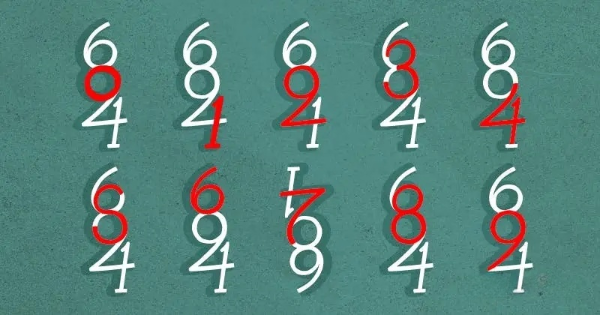How Many Numbers Can You Spot on This Picture?
Are you ready to put your visual perception to the test? A seemingly simple image has been taking the internet by storm, leaving everyone asking one question: how many numbers can you actually see? At first glance, this visual puzzle looks straightforward, but as you dive deeper, it quickly turns into a mind-bending challenge. Let’s explore this viral image and find out just how many numbers you can spot!

When you first look at the image, it seems like any regular visual test. However, upon closer inspection, you’ll realize it’s much more complex. The task is simple: count how many numbers you can identify in the picture. Sounds easy, right? But here’s the catch—not everyone sees the same amount of numbers, and that’s where the fun begins.
What’s fascinating about this image is the wide range of answers people give when asked how many numbers they can see. Some viewers spot just a few, while others claim to see many more. This discrepancy leads us to a deeper question: Why do some people see more numbers than others?
The variation in answers might have something to do with how our brains are wired. There’s a theory that the number of digits you spot may be influenced by whether you’re left-brain or right-brain dominant. Let’s break it down:
- Left-Brain Dominant People: If you’re more analytical and detail-oriented, chances are you’re left-brain dominant. Individuals who think this way might be able to pick out more structured numbers within the image. Their focus on detail helps them spot smaller, well-defined numbers that others might overlook.
- Right-Brain Dominant People: On the other hand, those with a creative and intuitive mindset—right-brain dominant individuals—tend to see patterns, shapes, and abstract elements. They might spot numbers that aren’t immediately obvious, perceiving more subtle or hidden forms in the image.
Take a moment to examine the image closely. Can you spot all the numbers? You may think you’ve found them all, but what if there’s more than meets the eye? This puzzle is all about visual perception and the way our brains interpret complex stimuli. Are you seeing everything clearly?
Most people will land on one of two different answers. Let’s explore both possibilities:
The First Answer: 6 Numbers
After some study, many people report seeing 6 numbers. These digits typically include 6, 8, 9, 4, 2, and 1. If these are the numbers you found, you’re in good company. These numbers are more obvious and tend to stand out first for most viewers.
But is that really all there is to it? Not quite!

The Second Answer: 8 Numbers
For those who take their time and dig a little deeper, two additional numbers can emerge, bringing the total count to 8. Here’s how:
- Look closely at the number 8. If you mentally split it in half, you can see the number 3 hiding within its shape.
- Rotate the image slightly, and a 7 may appear, cleverly concealed within the design of the surrounding elements.
These two hidden numbers make the puzzle even more intriguing. So, if you found 8 numbers instead of 6, you’ve unlocked a new layer of this visual test!
What’s the Correct Answer?

You might wonder, “How can there be two correct answers?” The beauty of this puzzle lies in its subjectivity. The image was designed in such a way that different people will see different things based on how their brain processes visual information. The variations in perception make this puzzle particularly interesting and highlight the complexity of human cognition.
For some, the image reveals 6 clear numbers, while for others, a bit more creativity and attention to detail unveils the full 8. Both answers are valid, and the key takeaway here is that perception is incredibly personal.
Whether you spotted 6 or 8 numbers, this puzzle is more than just a fun brain teaser—it’s a fascinating glimpse into how our minds work. Our perception can be influenced by everything from brain dominance to the amount of time we spend analyzing an image. And sometimes, seeing things from a new angle is all it takes to uncover hidden details.
The next time you come across an optical illusion, remember this puzzle. You never know what you might find if you take the time to really look. Whether you’re detail-oriented or creatively minded, challenges like this keep your brain sharp, boost your cognitive function, and—most importantly—offer a bit of fun along the way! Keep testing your perception and enjoy the surprises that come with it.



